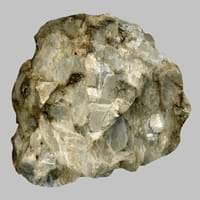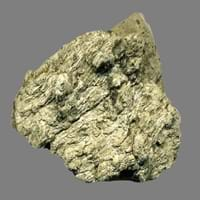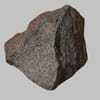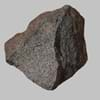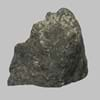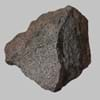Definition
Sovite is a coarse-grained variety of carbonatite which belongs to intrusive igneous rock
Dacite is a volcanic igneous rock which is rintermediate in composition between andesite and rhyolite
Origin
Unknown
Romania and Moldova, Europe
Discoverer
Unknown
Unknown
Etymology
Not Available
From Dacia, a province of the Roman Empire which lay between the Danube River and Carpathian Mountains where the rock was first described
Class
Igneous Rocks
Igneous Rocks
Sub-Class
Durable Rock, Soft Rock
Durable Rock, Soft Rock
Other Categories
Coarse Grained Rock, Fine Grained Rock, Medium Grained Rock, Opaque Rock
Fine Grained Rock, Medium Grained Rock, Opaque Rock
Texture
Granular, Poikiloblastic
Aphanitic to Porphyritic
Color
Black, Brown, Colourless, Green, Grey, Pink, White
Bluish - Grey, Brown, Grey, Light to Dark Grey
Durability
Durable
Durable
Appearance
Dull, Banded and Foilated
Vesicular
Interior Uses
Decorative Aggregates, Homes
Decorative Aggregates, Entryways, Interior Decoration
Exterior Uses
As Building Stone, Garden Decoration, Office Buildings
As Building Stone, Paving Stone, Garden Decoration
Other Architectural Uses
Curbing
Curbing
Construction Industry
As a Flux in the Production of Steel and Pig Iron, As a Sintering Agent in Steel Industry to process Iron Ore, As Dimension Stone, Cement Manufacture, for Road Aggregate, Making natural cement, Manufacture of Magnesium and Dolomite Refractories, Unknown, Unknown
As Dimension Stone, Construction Aggregate, for Road Aggregate, Landscaping
Medical Industry
Taken as a Supplement for Calcium or Magnesium
Not Yet Used
Antiquity Uses
Artifacts
Artifacts
Commercial Uses
An Oil and Gas Reservoir, As a Feed Additive for Livestock, Creating Artwork, Gemstone, Metallurgical Flux, Production of Lime, Soil Conditioner, Source of Magnesia (MgO)
Commemorative Tablets, Creating Artwork
Types
Not Available
Footwall Dacite, Hanging wall Dacite, Tuff and Biotite Dacite
Features
Available in lots of colors, Generally rough to touch, Is one of the oldest rock
Host Rock for Lead, Is one of the oldest rock
Archaeological Significance
Monuments
Not Yet Used
Not Yet Used
Famous Monuments
Not Applicable
Not Applicable
Sculpture
Not Yet Used
Not Yet Used
Famous Sculptures
Not Applicable
Not Applicable
Figurines
Not Yet Used
Not Yet Used
Formation
Sovites are formed due to low degrees of partial melting of rocks.
Dacitic magma is formed by the subduction of young oceanic crust under a thick felsic continental plate. Further, the Oceanic crust is hydrothermally altered as quartz and sodium are added.
Mineral Content
Ancylite, Apatite, Barite, Fluorite, Magnetite, Natrolite, Sodalite
Amphibole, Apatite, Biotite, Feldspar, Garnet, Hornblade, Magnetite, Plagioclase, Pyroxene, Quartz, Zircon
Compound Content
CaO, Carbon Dioxide, Sodium Oxide
Ca, Fe, Potassium Oxide, Mg, Potassium, Silicon Dioxide
Types of Metamorphism
Burial Metamorphism, Cataclastic Metamorphism, Contact Metamorphism, Hydrothermal Metamorphism, Impact Metamorphism, Regional Metamorphism
Burial Metamorphism, Cataclastic Metamorphism
Types of Weathering
Biological Weathering, Chemical Weathering, Mechanical Weathering
Biological Weathering, Chemical Weathering, Mechanical Weathering
Types of Erosion
Chemical Erosion, Coastal Erosion, Glacier Erosion, Sea Erosion, Water Erosion, Wind Erosion
Chemical Erosion
Grain Size
Medium to Fine Coarse Grained
Medium to Fine Coarse Grained
Fracture
Conchoidal
Conchoidal
Porosity
Less Porous
Less Porous
Luster
Subvitreous to Dull
Subvitreous to Dull
Cleavage
Not Available
Perfect
Toughness
1
Not Available
Specific Gravity
2.86-2.87
2.86-2.87
Transparency
Opaque
Translucent
Density
2.84-2.86 g/cm3
2.77-2.771 g/cm3
Specific Heat Capacity
Not Available
Resistance
Heat Resistant, Pressure Resistant
Heat Resistant, Impact Resistant, Pressure Resistant, Wear Resistant
Deposits in Eastern Continents
Asia
China, India, Kazakhstan, Mongolia, Russia, Uzbekistan
Not Yet Found
Africa
Namibia, Nigeria, South Africa
Not Yet Found
Europe
Austria, Denmark, Germany, Great Britain, Netherlands, Norway, Poland, Sweden, Switzerland, United Kingdom
France, Greece, Romania, Scotland, Spain
Others
Greenland
Not Yet Found
Deposits in Western Continents
North America
Canada, USA
USA
South America
Brazil
Argentina, Bolivia, Chile, Colombia, Ecuador, Peru, Venezuela
Deposits in Oceania Continent
Australia
New South Wales, New Zealand
New Zealand, South Australia, Western Australia
All about Sovite and Dacite Properties
Know all about Sovite and Dacite properties here. All properties of rocks are important as they define the type of rock and its application. Sovite and Dacite belong to Igneous Rocks.Texture of Sovite is Granular, Poikiloblastic whereas that of Dacite is Aphanitic to Porphyritic. Sovite appears Dull, Banded and Foilated and Dacite appears Vesicular. The luster of Sovite and Dacite is subvitreous to dull. Sovite is available in black, brown, colourless, green, grey, pink, white colors whereas Dacite is available in bluish - grey, brown, grey, light to dark grey colors. The commercial uses of Sovite are an oil and gas reservoir, as a feed additive for livestock, creating artwork, gemstone, metallurgical flux, production of lime, soil conditioner, source of magnesia (mgo) and that of Dacite are commemorative tablets, creating artwork.
